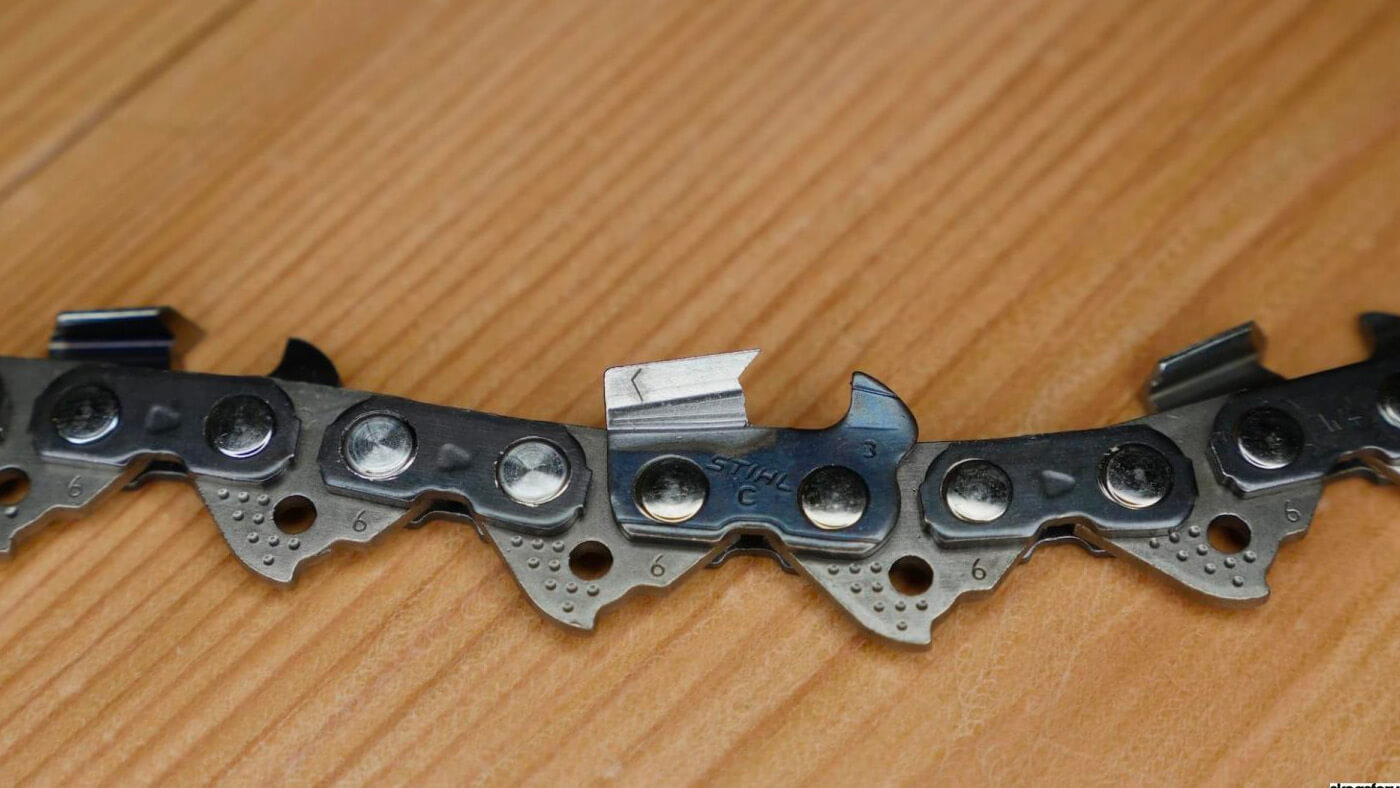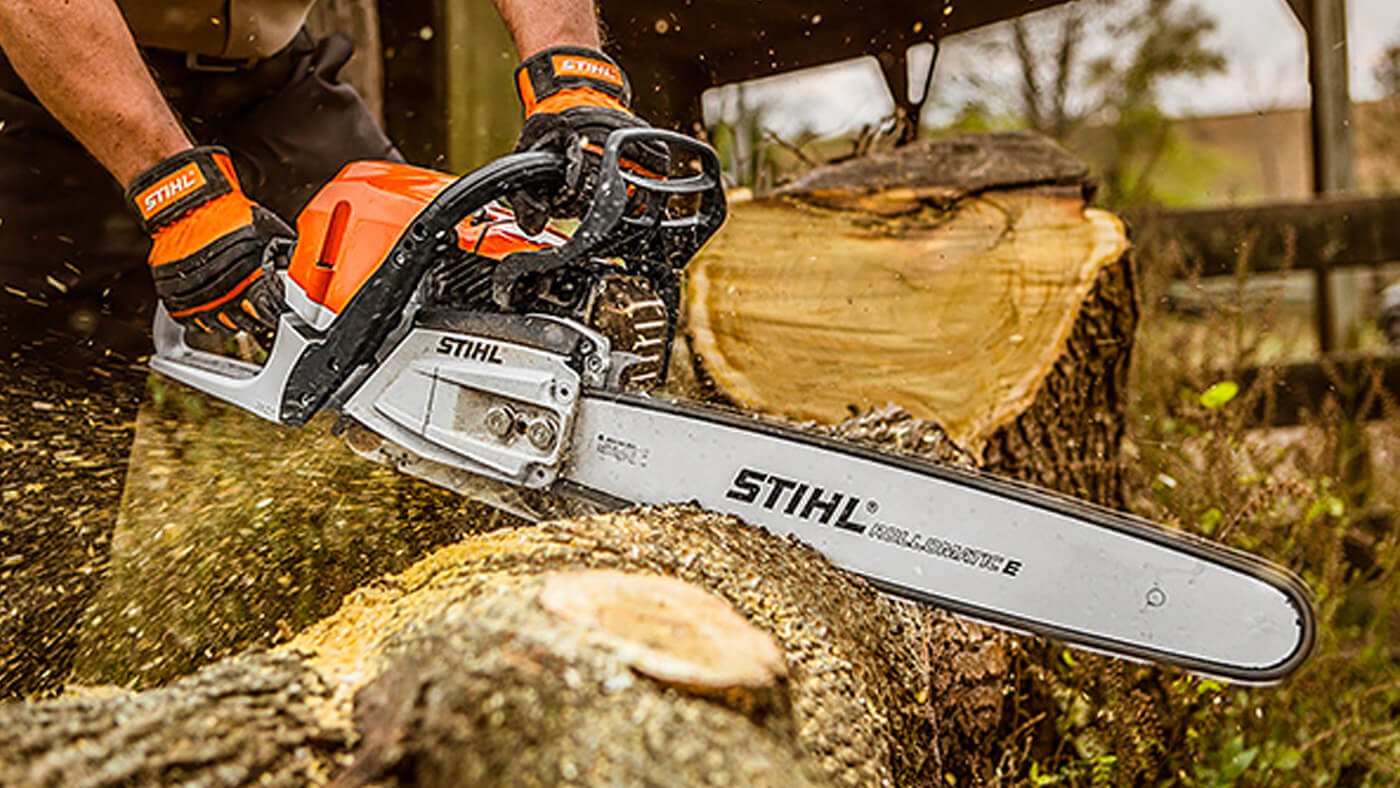One of the most important parts in any chainsaw is a good and high-quality chain. The difference in chainsaw chains can be hard to understand for someone who has never used them before. There are a lot of different chainsaw chains out there, and if you don't know what they all mean then it's hard to make sure your replacement chain is the right one.
We've pulled everything together in this guide so that not only will we equip you with knowledge on how important quality spec sheets can be when buying new equipment, but also show where each type comes from or why certain qualities should matter more than others.
The following are the 5 elements that make each type of the chainsaw chain.
1. Chain Pitch
2. Chain Gauge
3. Cutter Material
4. Cutter Style
5. Chain Arrangement
Chain Pitch
The chain pitch is important because it defines the size of the saw chain's bar, as well as the compatibility of the chain with other parts, such as the sprocket. If the pitch is too large or too small, it can damage the guide bar and cause the chain to come off. In addition, the wrong pitch can cause the chain to bind, making it difficult to cut through wood.
That's why it's important to check the chain pitch before you purchase a new chain for your saw. By doing so, you can be sure that you're getting the right type of chain for your saw and preventing any potential damage.
The table below shows the quick guide in determining the right pitch size for your chainsaw.
|
Pitch Size |
Recommended Chainsaws |
|
¼" |
Battery Chainsaws and Polesaws |
|
3/8” .043 |
Upto 14-16 inch Chainsaws 30cc-35cc |
|
3/8” .050 |
Arborist Top Handle Saws |
|
Pixel .325 inch pitch |
Chainsaws with engine power between 35cc-55cc. |
|
.325 Inch Pitch |
Chainsaws with engine power between 35cc-60cc |
|
3/8 .063 inch pitch |
Chainsaws with engine power between 50-100cc |
|
.404 inch pitch |
Used for most aggressive chainsaws for heavy-duty work |
Chain Gauge
The chain gauge is one of the most important aspects of a chainsaw chain. It is the measurement of the thickness of the drive link where it meets the bar. The chain gauge must match the bar, or else the chain will either be too loose and could come off, or too tight and could break. A saw with a chain that is too loose will be dangerous to use, as it could easily kick back. Conversely, a saw with a chain that is too tight will cause excessive wear and tear on both the chain and the bar.
The table below shows the four different gauge sizes for chainsaw chains.
|
Inches |
Millimeters |
|
0.043″ Chainsaw Chain |
1.1mm |
|
0.050″ Chainsaw Chain |
1.3mm |
|
0.058″ Chainsaw Chain |
1.5mm |
|
0.063″ Chainsaw Chain |
1.6mm |
Cutter Material
The cutter material is important for the durability and sharpness of the chain. The three most common cutter materials are steel, carbide, and diamond. Steel is the most common cutter material and is economical, but it requires more frequent sharpening than carbide or diamond. Carbide cutters are more durable and stay sharp longer than steel, but they are also more expensive. Diamond cutters are the most expensive, but they are also the longest lasting and require the least amount of maintenance.
Cutter Style
The cutter style refers to the shape of the cutting tooth. The three most common cutter styles are semi chisel, skip tooth, and full chisel. Semi chisel or Micro chain offers a high-quality cut with lower vibration, and can be easily sharpened. This makes a good choice for occasional users and agricultural applications. The full chisel or Super chain feature the highest cutting performance among all STIHL chainsaws.
This is achieved through the full-chisel tooth and low cutting resistance, making Super saw chains ideal for professional forestry and harvesting wood. Duro saw chains are extremely robust and low-wear. Their carbide plating means that the chains stay sharp for up to ten times longer than traditional chains. This means that a Duro chain is great for cutting dirty wood.
Chain Arrangement
There are three common types of chain arrangements: full house or standard, full skip and semi skip. Each type of chain has its own advantages and disadvantages, so it's important to choose the right one for the job at hand. The chain arrangement on your saw will depend entirely upon the size and what you plan to use it for.
The full house or standard chain is the most versatile and can be used for a variety of tasks. It has a large number of teeth that are evenly spaced, making it ideal for cutting through thick branches. However, the full house chain can also be used for precision work, such as carving.
The full skip chain is designed for speed and efficiency. It has fewer teeth than the full house chain, but they are spaced further apart. This allows the saw to cut through wood more quickly, but it isn't as effective at precision cuts.
The semi skip chain is a compromise between the full house and full skip chains. It has fewer teeth than the full house chain, but they are closer together than on a full skip chain. This chain is often used for more detailed work, such as carving. It provides a smoother cut and is less likely to cause kickback.
Since you already know all about chainsaw chain types, now it's time to make sure they are always kept sharp. You can visit our store and we'll help you choose and maintain the best chain for your favourite chainsaw. We have plenty of great deals at GYC for people who want our top of the line products at affordable prices.



































